Johnny jump ups grow lots of flowers which will appear for 1-2 weeks and then die off. You can individually pick of flowers as they have finished but this can take a while once the plant is big. Pruning the top 2 inches off the plant is the easiest way to deadhead a large area.
Once the plant is larger and the flowers have died off it can be a pain to pinch off each old flower individually. The easiest way is to snip of areas of flowers down to the stem. Don’t worry if you snip off some leaves as Johnny Jump ups grow back quickly.
This article will explore how to deadhead johnny jump ups, how to prune them for more flowers and how to get the best out of your plant.
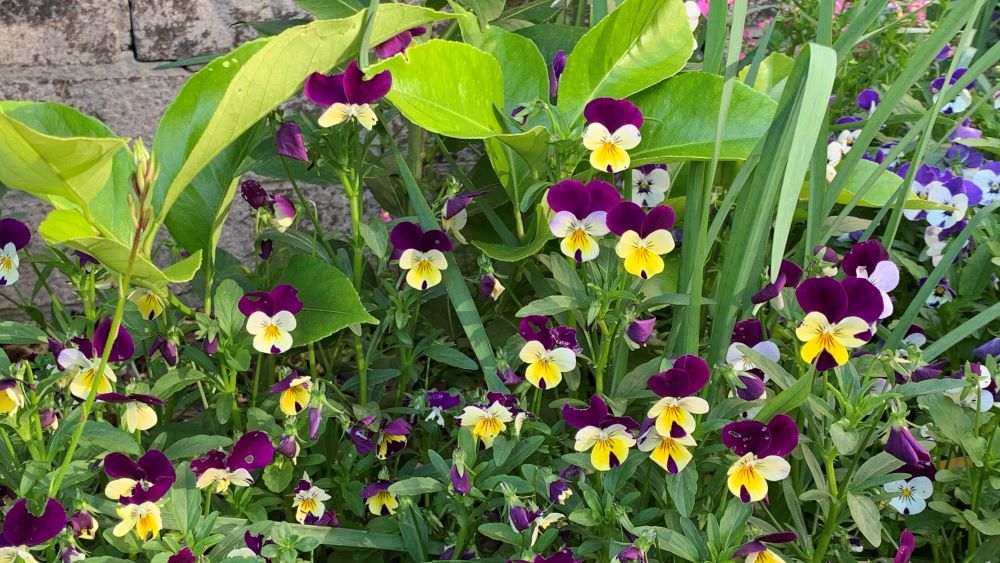
How to deadhead johnny jump ups
Johnny jump ups send up endless amounts of flower heads all the way from all through winter and into spring. This means that there will be new flowers coming and then dying off. Removing the flowers as they finish will encourage the plant to send up new flowers to replace them.
Deadhead johnny jump ups by pinching off the individual flowers as they fold over and die off. Using your fingernails pinch them off near the leaf area or use some kitchen scissors to snip them off.
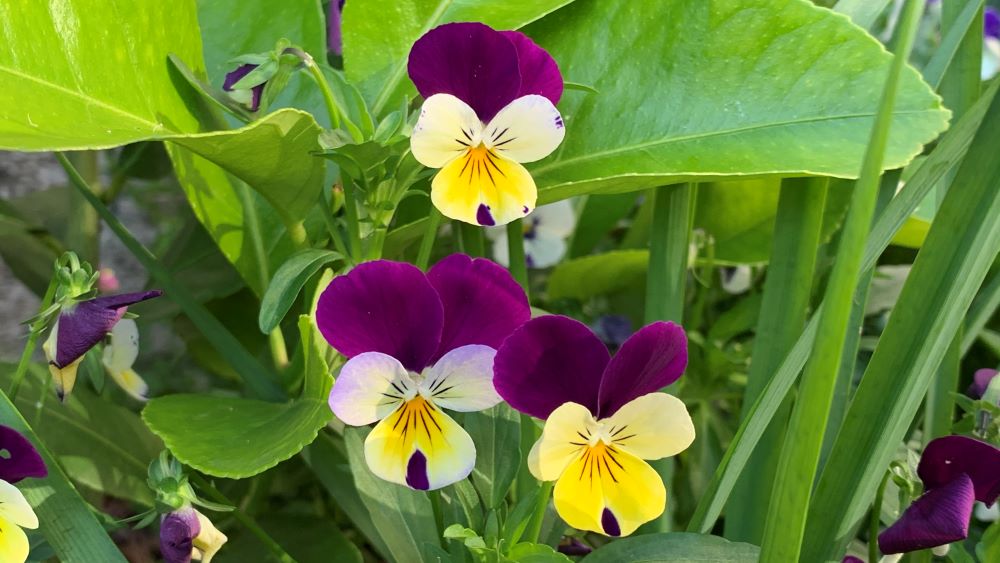
For large johnny jump ups or viola plants there can be a time where there may be 50 flowers that need to be snipped off at the same time.
The best way to deal with a johnny jump up with lots of finished flowers is to grab some secateurs and snip off the flowers in bunches.
This can leave areas of your johnny jump up green instead of flower covered but they will quickly recover. New flowers will pop up in the areas where sun can reach the plant.
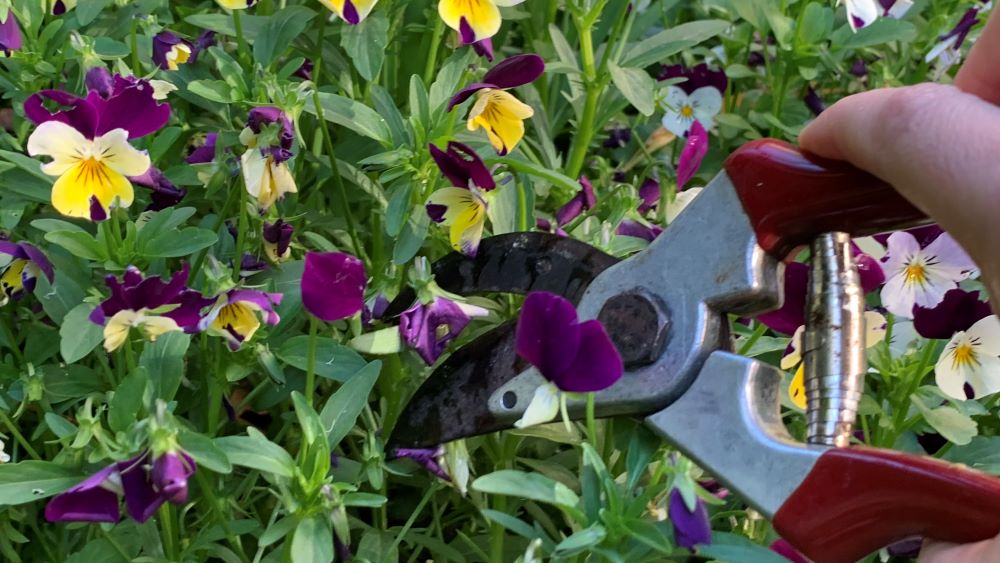
How to prune johnny jump ups
Pruning johnny jump ups can keep them to a size that fits in the space you planted them, can remove large amounts of dead flowers or help to prepare them to survive summer.
Here are my top tips for pruning johnny jump ups.
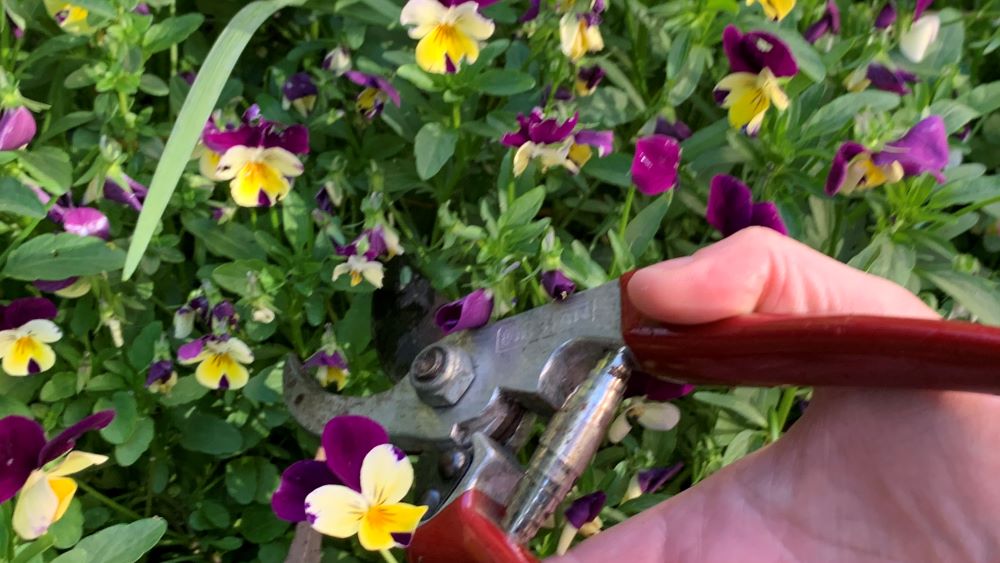
Prune to keep them smaller
Johnny jump ups can quickly outgrow the space you planted them in so can benefit from a prune to keep them smaller. My johnny jump ups have grown from 2 inches to over 20 inches across. This has quickly filled the space near my lemon tree.
To keep johnny jump ups small, simply prune the side stems to the size you want. Johnny jump ups are hardy, quick growing and will survive a harsh prune. Make sure you don’t take any more than 1/3 of the leaf area off at any one time and water the plant well after pruning.
You can use sharp secateurs or even hedge shears if you want to prune off the top ½ inches of the plant. This will encourage the plant to grow a whole new coverage of flowers within a few weeks in fall and spring.
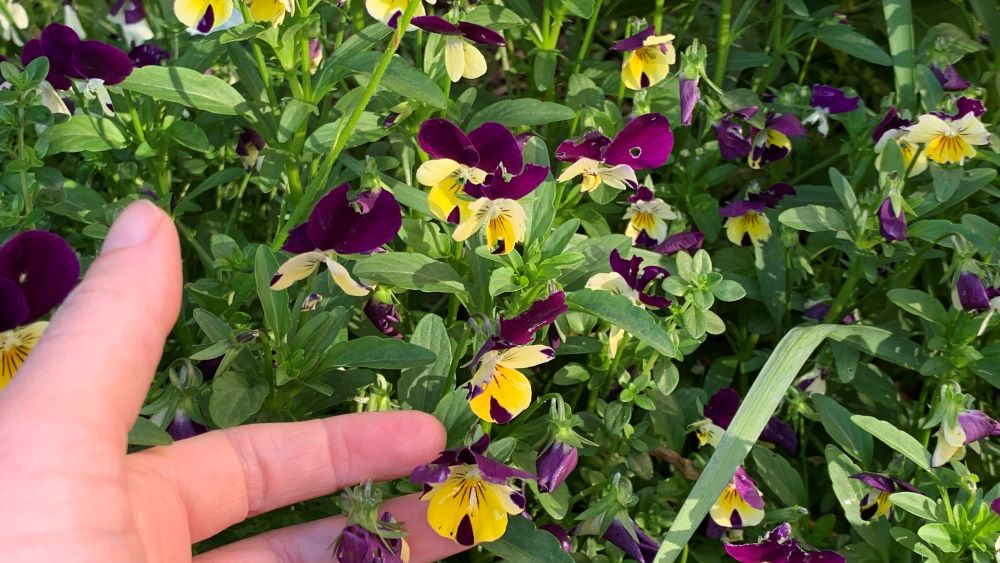
Prune johnny jump ups to deadhead them easily
Pruning johnny jump ups can be done at the same time as deadheading to keep the plant to a nice shape. Trim the top few inches of the plant and this will remove old flowers and shape the bush at the same time.
Prune johnny jump ups to prepare for summer
Johnny jump ups will generally finish flowering towards the end of spring or when the weather starts to heat up. In very hot climates johnny jump ups will set seed and die off before dropping their seed onto the soil.
For areas that get mild summers, violas can actually survive through the hot weather and spring back to life in the cooler months of fall. To prepare them for summer you can prune off all the dead flowers leaving the green leaves underneath.
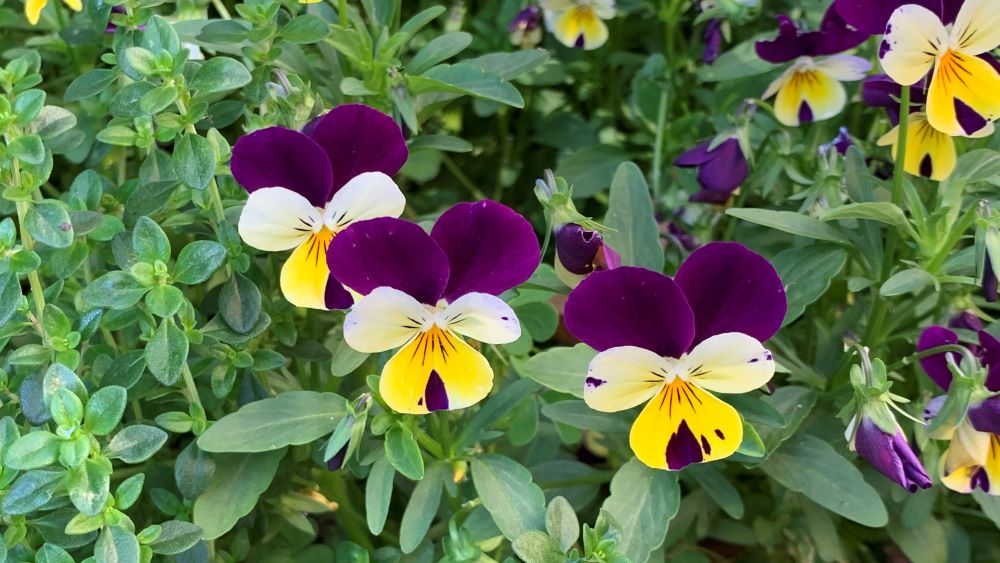
By keeping the plant well watered you can keep them alive over the summer while staying dormant. In fall, any damaged leaves can be pruned off and a handful of pelleted chicken manure added. The plant can then spring back to life with new leave and flowers for another year of growth.
Johnny jump ups can usually survive as perennials for 1-2 years in some climates but are likely to need to be replaced in their third year.

Do johnny jump ups need to be deadheaded?
Johnny jump ups will need to be deadheaded if you want a continuous display of flowers. Removing the old flowers will allow more sunlight to reach the new flowers coming up and send the plant the message to keep growing.
When old flower heads are left on the plant it can go into ‘seed mode’ and stop producing more flowers and focus its energy on growing and setting seed instead.
For the most flowers possible deadhead your johnny jump ups regularly.

Can you transplant johnny jump ups?
Johnny jump ups can be transplanted when they are small. I had moved johnny jump ups after they had been in a shady position after 2-3 months. These moved well and recovered and grew back. Once plants have been growing for longer than this they should not be moved as there is a risk that their roots can be damaged and they will not recover.
Are johnny jump ups invasive?
Johnny jump ups are not invasive but there is the chance that their seeds can drop and they may appear the next year. This is rare when the ground is covered with mulch but it certainly can happen in a pot. I had left a pot empty after johnny jump ups had finished and they appeared the next year.
While they can appear they are very easy to remove and can be pinched out of the ground if they grow in the wrong spot.
For johnny jump ups to reappear they need moisture, bare soil and no competition from other plants. You can also collect the seed of johnny jump ups at the end of spring. Snip off seed pots and place them in a brown paper bag ready for the next fall.
How to deadhead Johnny Jump Ups (Violas) – Summary
Johnny jump ups should be deadheaded regularly to keep them flowering throughout the year. You can trim off large clumps of flowers or individually pinch them off with your fingertips. The more you do this, the more flowers the plant will produce. This will refresh your plant and give you a large display of new flowers.
I am an accredited practicing dietitian, experienced gardener and a dedicated cook. I love writing and sharing my experience so you can learn from my successes and mistakes.
